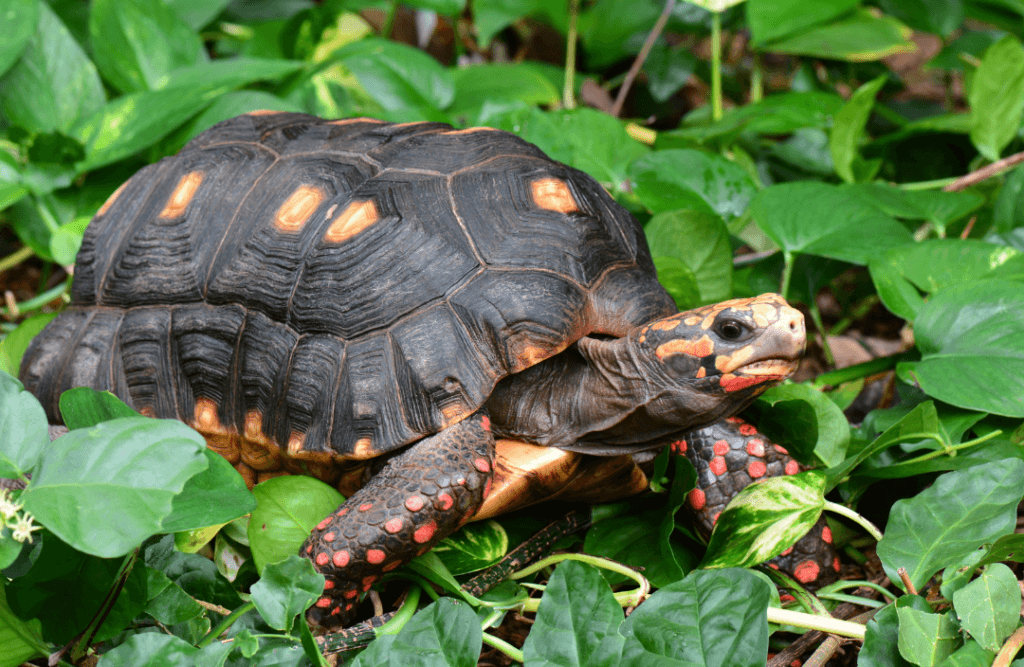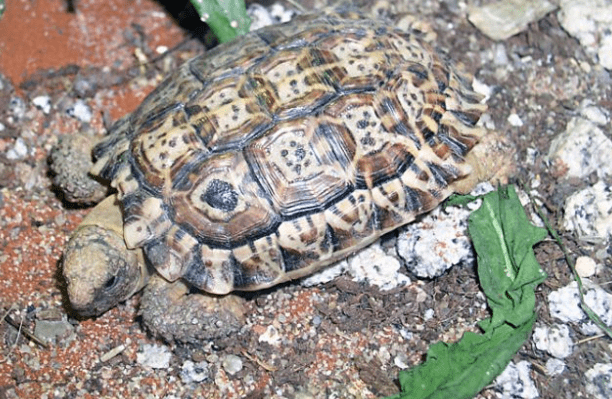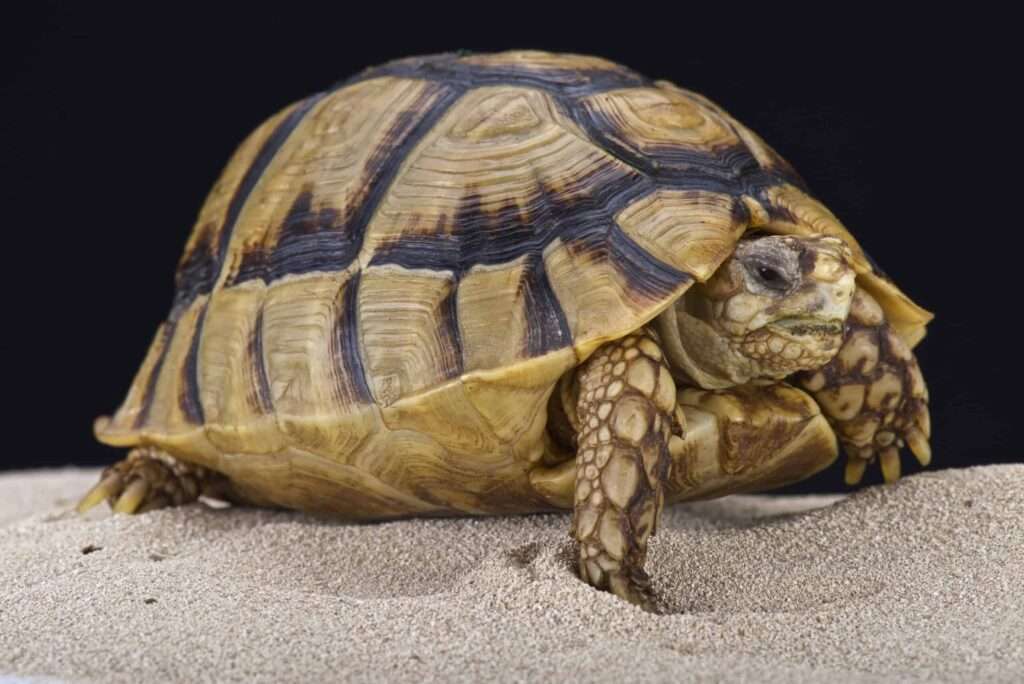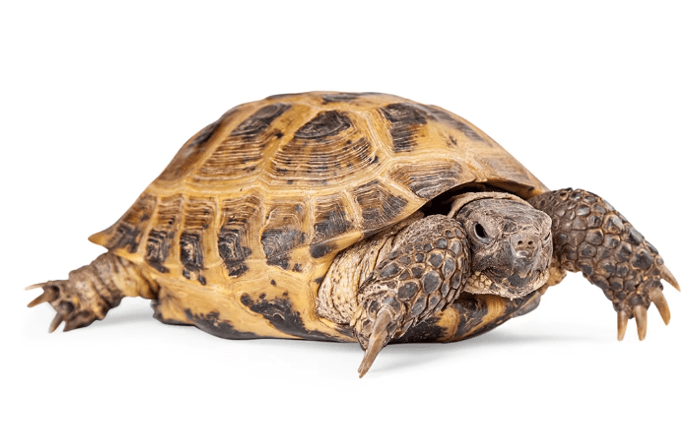
Description
Medium-sized red-footed tortoises can be found in Central and South America. They have a concave, rough shell that is typically black, grey, or brown, and the majority of their skin is black. In young tortoises, the bumps are surrounded or covered by small, distinct regions of yellow or brown. On their head, they could have reddish-orange marks. There are frequently patches of yellow, orange, or red on their legs and tail.
Habitat
Red-footed tortoises can be found in a wide range of locations east of the Andes, including eastern Columbia, the Guianas, Rio de Janeiro, Paraguay, Bolivia, and northern Argentina in the west, as well as Panama, western Columbia, and the island of Trinidad. More Caribbean islands have recently received their introduction. This species can be found in savanna, dry thorny forests, temperate forests, and rainforests. Due to the difficulty of burrowing in muddy places, they prefer highly wooded, humid habitats instead. In forest clearings with mangoes, palms, and other plants, they are less frequently encountered.
Behavior
Other members of the same species of tortoise, such as red-footed tortoises, will “gaze follow” them by looking in a similar general direction. These creatures appear to only travel a short distance at night. Like the majority of tortoise species, red-footed tortoises often sleep for more than half of the day. They could sleep even longer after a heavy meal, usually for five to ten days. They seek a refuge that offers both protection from predators and control over temperature. As many tortoises as can fit inside of a shelter will often share it. These tortoises frequently cluck in a way that is reminiscent of household hens. Males primarily make the noises during courting or mating. Additionally, while foraging, juveniles frequently cluck or chirp. As they make the sound, they will pause in their foraging and bob their heads. Little more is known about this species’ perception or communication.

Keeping as Pet
Housing
A solid, escape-proof enclosure outside is the best type of enclosure for red-footed tortoises. This species is confined to the tropics and prefers a humid environment. If necessary, install a sprinkler or mister to raise the humidity. This tortoise enjoys cooling off in a muddy wallow or puddle. Make sure the tortoise can exit the shallow water pan securely before you bury it in the dirt.
If at all feasible, provide a shaded place with lots of greenery for a cool escape. A shelter resembling a doghouse might serve as a shady area as well. To stop your red-footed tortoise from digging out of the cage and fleeing, the walls should be at least 16 inches high and extend a few inches below the surface of the ground. This tortoise may live indoors, although a big enclosure is required (about 4 feet by 8 feet, though larger is preferable).
Food and Water
Red-footed tortoises are omnivores in the wild. They consume a wider variety of foods than many other tortoises do. Their primary diet consists of leafy greens, fruits, and other vegetables.
A well-balanced diet for red-footed tortoises should consist of 60% dark leafy greens and grasses, 15% vegetables, 15% fruits, and 10% tortoise pellets or animal protein. Feed the amount of food they will consume in the next 15 to 30 minutes, or you can calculate the serving size to be the size of the shell. Feed them every morning, typically at the same time each day.
Dandelion greens, mustard greens, endive, and escarole are among the best dark, leafy vegetables for red-footed tortoises. Kale, spinach, and broccoli should only be given in very little amounts; avoid feeding these in huge amounts.
Compared to many other tortoise species, red-footed tortoises can tolerate fruit better. Carrots, parsnips, sweet potatoes, papayas, figs, and hard melons are a few other fruits and vegetables that are recommended for regular feeding. Once every two weeks, they can have around 1 ounce of animal protein in the form of lean meat or moistened low-fat cat food. Three times per week, add calcium and vitamin D3 pills to their food. Additionally, you can provide vitamin and mineral-enriched tortoise pellets.
Daily fresh, filtered water to replenish its water pan.
Table





